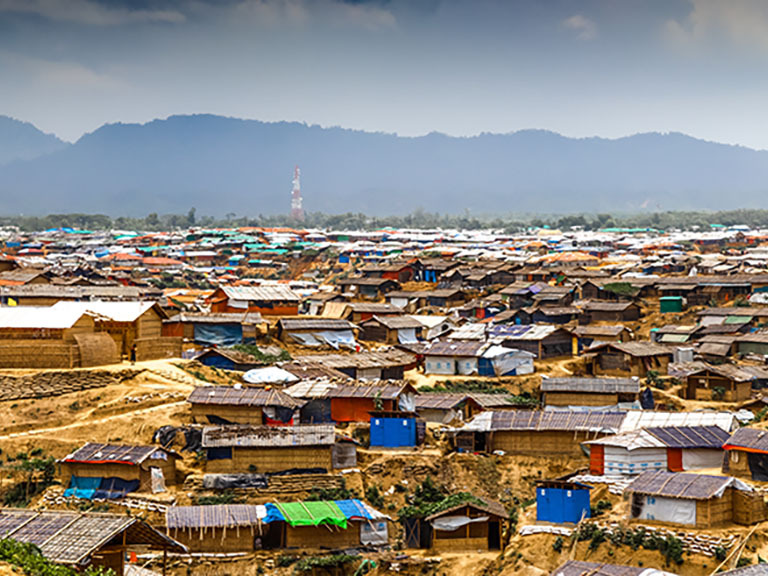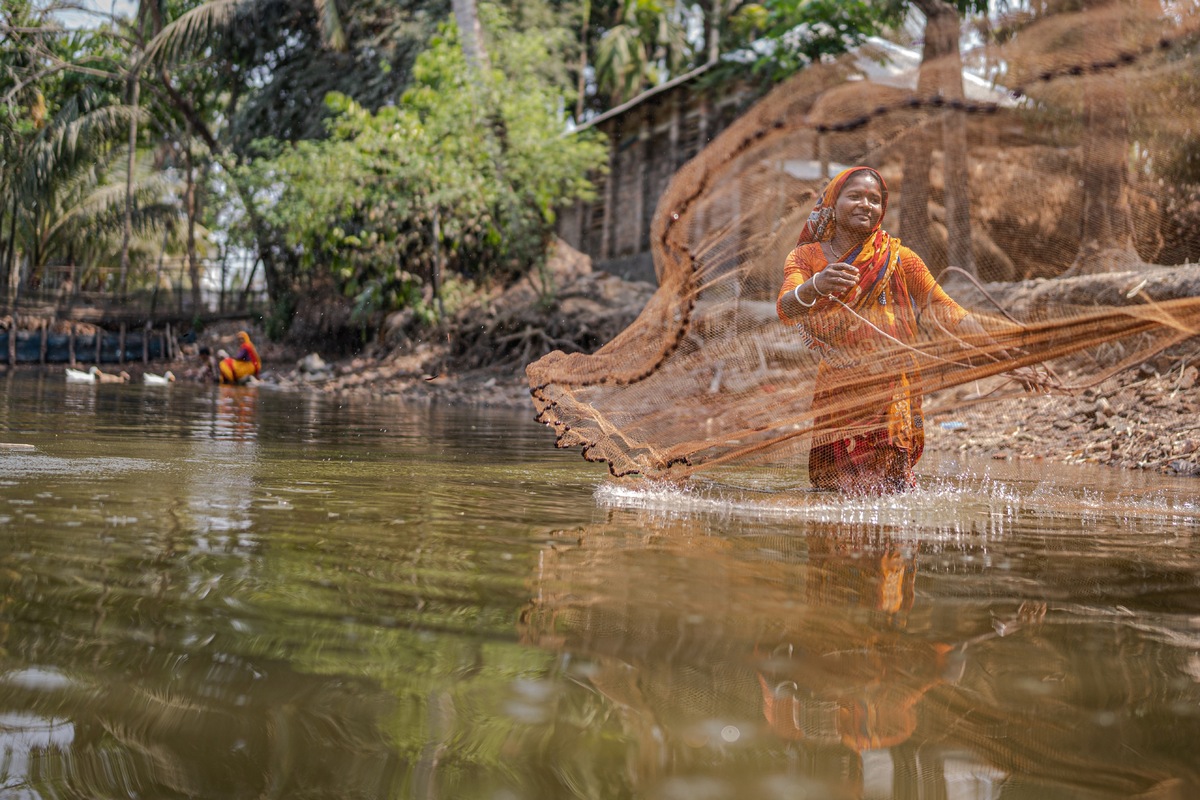
Photo by Joel Carillet/iStock
Issue
A massive influx of refugees caused unprecedented land degradation in refugee camps
Solution
Improving living and environmental conditions in displacement settings and greening the camps through Sustainable Land Management
Natural resource deterioration in refugee camps
Since August 2017, hundreds of thousands of Rohingya people have fled to Bangladesh due to the political crisis that took place in Myanmar. According to the Food and Agriculture Organization of the United Nations (FAO), 889,704 million people live in 34 densely populated refugee camps in the Cox's Bazar, a district in south-eastern Bangladesh. A rapid increase in population caused significant land degradation and deforestation, which amounted to more than 7,000 hectares inside and outside the camps in one year. Many of the refugees residing in the camps relied on forest resources for fuel for their daily needs and there were no alternative energy resources.
Degradation of land and forest dramatically increased the risk of landslides due to flash floods, typhoons and soil erosion. During the monsoon season in 2018, 42,000 people living in the camps were affected by landslides and floods. Moreover, this also had a significant impact on biodiversity and forest resources, and spurred a decline in wildlife. The overexploitation of forest resources in Cox's Bazar was endangering elephants and other wildlife that inhabit the area. Disturbance of the natural habitat of Asian elephants in the region had led to an increase in human-elephant conflict since 2017. Against this background, there was an urgent need for measures to control forest degradation and improve ecosystem functioning.

Sustainable Land Management for resilience and sustainability
To address this high disaster risk and environmental degradation in refugee camps, a number of international organisations and NGOs have been providing humanitarian and environmental interventions. In particular, the Sustainable Land Management (SLM) approach, led by FAO Bangladesh has played a major role in promoting environmental management in the Cox's Bazar region. This initiative, which aims to improve the living and environmental conditions of the camps through land stabilisation and camp greening, served multiple benefits including disaster risk reduction, natural resource restoration, and improvement of livelihood opportunities.
For the purpose of improving living and environmental conditions at refugee camps, the SLM project was conducted in a comprehensive manner, including development of a resource management plan, identification of suitable land for SLM interventions, as well as capacity development for refugees and host communities for natural resource management. Specifically, the project identified SLM technologies to be introduced for ecosystem-based disaster risk reduction inside and outside the camps. For example, the land was restored by planting trees, without destroying the existing vegetation which is useful to stabilise slopes and prevent landslides. The project has also restored forests through improvement of soil fertility by planting fast-growing trees to restore degraded forests. As a part of SLM interventions, reforestation activities and distribution of seeds were also carried out in cooperation with the local forest department. In addition, measures were taken to restore elephant habitat, including planting food-friendly species for elephants, raising community awareness and enhancing monitoring systems.
Whilst SLM interventions have been undertaken, the underlying causes of environmental degradation should also be addressed. In 2020, FAO, in conjunction with the International Organization for Migration (IOM), and the World Food Program (WFP), launched a new project called ‘Safe Access to Fuel and Energy Plus Livelihoods (SAFE Plus)’ project to provide refugees with alternative energy sources such as liquefied petroleum gas (LPG) and stoves, as well as to improve refugees’ access to food production through livelihoods programming. This project aims to reduce the demand for firewood collection and prevent further environmental degradation.
Land cover has been monitored and the extent of land degradation has been assessed, while geospatial analysis has been used to qualitatively assess the sustainability of the land. These monitoring efforts indicated a notable restoration of vegetation inside and outside the camps. As a result of SLM interventions, about 258 hectares of forest in the camp and about 2,000 hectares around the camp were successfully restored. Planting native species also enriches the ecosystem by providing food and shelter for wildlife.
Engagement of refugee communities
The noteworthy feature of this project is that most of the land restoration and reforestation activities involved refugee communities. Tree planting and management in the camps provided an opportunity to motivate refugees to protect natural resources. For instance, afforestation activities were facilitated by a local reward system for refugees. It is also worth noting that this comprehensive approach to SLM allowed communities to recognise that they themselves have a major role to play in supporting the restoration of the land that serves as a bridge between people and nature. On the other hand, it is also important to ensure that refugees understand the benefits to their livelihoods. Planting fast-growing tree species will help stabilise the soil and provide a source of fuel for the refugee community in the future.
In conclusion, comprehensive land and forest restoration and management led to positive changes in environmental conditions in the region and improved communities’ attitude to natural resources. Greening refugee camps in Cox’s Bazar is also a good illustration of how to address living and environmental issues associated with the influx of people in displacement settings. Engagement of refugees and appropriate monitoring and evaluation are the key to successful scaling-up of the interventions.
Related Information
- FAO, Bangladesh - FAO and Rohingya refugees restore forests in and around once barren camps
- FAO, Report by FAO at WOCAT Symposium in Ethiopia 2019
- UNHCR & IUCN. 2018. Plantation and Management Plan for Camp 4, Cox’s Bazar. UNHCR, IUCN (International Union for Conservation of Nature), Dhaka, Bangladesh.
KEYWORDS
- # Case Study
- # Biodiversity/Ecosystem
- # Forests/Forestry
- # Human Health
- # Life of Citizenry and Urban Life
- # Local Communities
- # Natural Disasters
- # Adaptation Action/implementation
- # Capacity Building
- # Disaster Prevention/Disaster Mitigation
- # Impact Assessment/Risk Assessment
- # International Cooperation
- # Nature-based Solutions
- # Participatory Approach
- # Asia
- # Bangladesh
- # 2021




